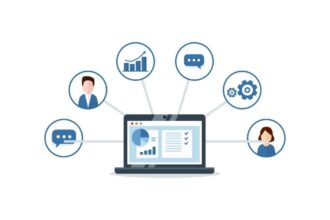It’s the era of big data. Companies are inundated with data within and outside their enterprises, and it’s critical that the tools and processes are in place to get this data to the right people at the right time to make important business decisions. To ease the flow of information from various sources to business users, companies continue to make large investments in business intelligence solutions. However, too much time and effort is spent collecting and analyzing data, indicating that the full value of BI has yet to be realized.
It’s the era of big data. Companies are inundated with data within and outside their enterprises, and it’s critical that the tools and processes are in place to get this data to the right people at the right time to make important business decisions. To ease the flow of information from various sources to business users, companies continue to make large investments in business intelligence solutions. However, too much time and effort is spent collecting and analyzing data, indicating that the full value of BI has yet to be realized.
MorganFranklin Corporation recently conducted a BI survey and asked participants to share their thoughts around priorities. Survey respondents came from a wide variety of industries in the public sector, financial services, telecom, and professional services.
Here are some key observations from the survey results:
Data quality or data integration was listed as a top priority, with more than 80 percent of survey respondents calling them “important or critical,” which is not surprising, given the current regulatory environment. Many years ago, Gartner predicted that more than 50 percent of data warehouse projects would have limited acceptance or be outright failures because of lack of attention to data quality issues. Top priorities today reinforce that data quality remains the biggest impediment to the success of BI solutions.
The second highest priority, 60 percent of respondents said, was the implementation of a budgeting, planning and forecasting solution. As BI systems evolve, organizations are looking to integrate budgeting and planning solutions with reporting and analytical solutions to see a more complete picture. This integrated solution allows organizations to understand actual results. In turn, users can explain budget variances and drive root cause analysis around off-target key performance indicators, which is critical to managing operational costs. Given the marketplace’s desire for these tools, more BI suites include budgeting and planning modules.
For reporting and ad hoc analysis, Microsoft Excel and Access are still the favorite tools, and 66 percent of respondents said they are active parts of their BI solutions. These “tactical BI” tools will be threatened by increasingly user-friendly pure analytics tools, but will not be replaced by those tools for core processing. Tools like Excel and Access will be challenged in the marketplace by an increased emphasis on spreadsheet controls, as well as compliance issues, driving these tactical BI solutions to add controls and functionality. Despite these challenges from new solutions and tools, tactical BI solutions will endure. More and more, analytics tools will mirror the look and feel of Excel and other solutions to minimize the gap and further increase adoption.
As with all IT initiatives, ROI is a clear component of the evaluation equation for analytics in business intelligence. Analytics’ potential to unlock big-dollar secrets hidden in big-data environments seems to have captured the imagination of buyers, particularly with ROI. While respondents agreed that BI solutions provide competitive advantage, they struggle when calculating the return on investment. With 70 percent indicating that advanced analytics dashboards would be beneficial to their organization, it’s clear that ROI is top-of-mind. From the outset, BI initiatives should include specific metrics and measures, such as costs associated with existing infrastructure and time spent generating and aggregating information (vs. analyzing results), to support ROI analysis.
Companies are seeking ways to gain competitive advantage by leveraging business intelligence. In fact, 75 percent of respondents plan to either maintain or increase their BI budgets in 2012. Improvements in data quality, along with strong change management procedures and a focused BI strategy, will help move users out of their comfort zones and into the world of forward-looking decision making and planning. They will convert data into decisions as a result.







